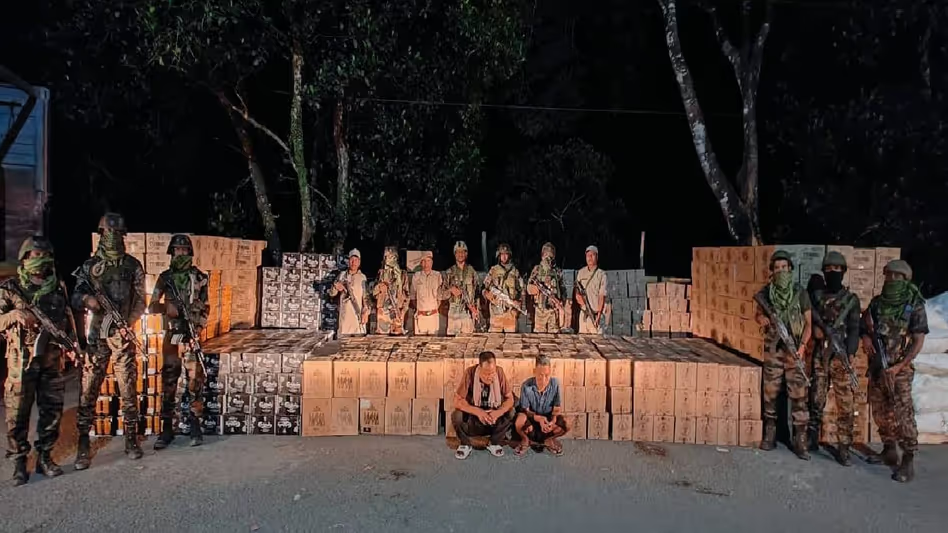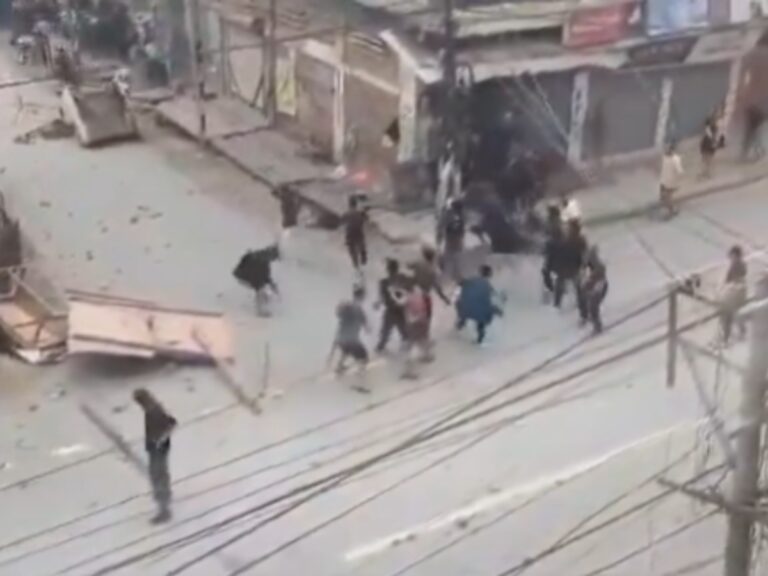Assam Rifles Seizes Illegal Liquor Worth Rs 1 Crore on NH-37 in Manipur
Summary
On July 24, 2025, Assam Rifles troops, acting on precise intelligence, intercepted a massive consignment of illicit liquor—1,430 cases amounting to over 32,000 bottles and cans—on National Highway-37 near Awangkhul in Manipur’s Tamenglong district. The haul’s estimated black-market value stands at nearly ₹1 crore. The seized contraband and the suspects involved were promptly handed over to Manipur State Police for further legal action, underscoring the paramilitary force’s commitment to curbing illegal trade in the region
Introduction: When Highways Turn into Contraband Corridors
Have you ever wondered how so-called “party packs” of liquor end up on the black market, far from licensed shops and dry zones? It’s a cat-and-mouse game that plays out beneath the radar—until a routine checkpoint suddenly becomes the stage for a ₹1-crore bust. On the night of July 24, 2025, Assam Rifles troops turned the spotlight on illegal smuggling along NH-37 near Awangkhul, unearthing a staggering 32,000-plus bottles of contraband liquor. It’s a high-stakes drama that reveals the shadowy underbelly of northeastern India’s illicit trade networks and the relentless efforts of security forces to foil them India Today NENortheast Today – Home.
Setting the Scene: NH-37 and the Awangkhul Checkpoint
National Highway-37 is more than just asphalt connecting cities—it’s a lifeline weaving through the rolling hills and dense forests of Manipur’s Tamenglong district. At the Awangkhul checkpoint, vehicles grind to a halt each evening under the watchful eyes of Assam Rifles personnel. For locals, it’s routine: IDs checked, luggage glimpsed, the occasional sniffer dog circling a suspicious bag. But for smugglers, it’s a gauntlet they learn to navigate—until that one night when the net snaps shut.
Imagine the humid air, punctuated by the distant hum of a lone scooter engine. One moment, nothing stirs; the next, a blue Yamaha Fascino hurtles toward the barrier. No license plate, tinted visor—classic tip-off. What followed was a textbook interception: the rider abandoned the scooter, vanished into the night, and left behind a mobile warehouse of illicit spirits
The Operation Unfolds: Precision Meets Patience
So, how did the Assam Rifles know where to strike? Smuggling lore in the northeast thrives on word-of-mouth routes, but intelligence gathering has turned precise. Months prior, signals intelligence flagged unusual call patterns near Lilong and Awangkhul. Human sources whispered of a big consignment moving downhill toward Imphal. By July 23, patrols were sharpened, checkpoints rotated, and mobile squads stood ready within a 10-kilometer radius.
On the night in question, troopers noticed a large, unmarked van loitering near the checkpoint’s entry. Two scouts tracked its movement upstream. Meanwhile, the Fascino scooter—likely a decoy or advance team—zoomed in. The moment the rider swerved to evade, the trap sprung: spike-strip deployment, spotlighting the abandoned vehicle, and rapid-response teams fanning out into adjacent groves. Within minutes, officers unearthed sealed crates hidden under blankets—1,430 cases of assorted liquor brands waiting for downstream distribution
What Is “Illegal Liquor” in Manipur’s Context?
When we talk “illegal liquor,” it isn’t just unlicensed whiskey or moonshine. In Manipur, “illicit brew” covers a spectrum:
- Unregistered Brands: Bottles lacking government excise stamps, smuggled from neighboring states or countries.
- Homemade Variants: Locally distilled spirits sometimes toxic due to impure fermentation processes.
- Foreign Imports: High-duty imports diverted through porous international borders, primarily Myanmar.
This haul of 32,000-plus bottles spanned sealed international labels and local churns. Dealers favor variety—hard spirits for urban clubs, arrack for rural joints, and cheap hooch for street-corner “happy hours.” By circumventing legal channels, they sidestep duties, regulations, and quality checks—maximizing profit at the cost of public health and public revenue
The Price Tag: Breaking Down ₹1 Crore
₹1 crore sounds like a fortune conjured overnight. But when you break it down:
- 1,430 Cases × Approximately 22 Bottles/Cans per Case = 32,000+ Units
- Average Black-Market Rate: ₹3,000–₹4,000 per Bottle (for premium imports and popular labels)
- Math Check: 32,000 × ₹3,125 ≈ ₹1 Crore
It’s staggering, but remember—these rates can soar in remote tribal areas where supply is thin, and demand never sleeps. Each abandoned case is a jackpot for traffickers, who look to move such consignments in multiple small drops, minimizing risk and maximizing returns
Personal Story: A Village Watch Captain
Meet Raju (name changed), a self-appointed village watch captain in Tamenglong. After attending a local safety workshop, he began patrolling the roads at dusk. “I used to think smuggling was a big city problem,” he says. “Then I found bottle caps and empty cans hidden in bushes near my school. Now, whenever I see a stranger without papers, I note down the bike number and call the checkpoint.” Raju’s vigil helped tip off officers to the scooter’s early morning test runs, contributing indirectly to the ₹1-crore seizure.
Conclusion: A Toast to Vigilance
The Assam Rifles’ ₹1-crore liquor bust on NH-37 is more than a headline—it’s a testament to the power of intelligence, community engagement, and adaptive policing. In the intricate dance of smugglers and enforcers, tonight’s move sends a clear message: no contraband corridor is too remote, no highway too familiar. As the wheels of that abandoned scooter gather dust, the spirit of lawful order rides on—ensuring that the only spirits flowing freely in Manipur are those licensed and taxed, not hidden in the shadows for illicit gain.
FAQs
- How much liquor was seized by Assam Rifles on NH-37?
Troops intercepted 1,430 cases containing over 32,000 bottles and cans of assorted liquor - What is the estimated black-market value of the seized consignment?
The haul’s value is pegged at nearly ₹1 crore, based on prevailing underground rates of ₹3,000–₹4,000 per bottle - Where exactly did the operation take place?
The interception occurred near Awangkhul on National Highway-37 in Manipur’s Tamenglong district - Who was involved in the smuggling attempt?
While the primary rider fled, Assam Rifles detained several associates whose identities are under investigation and handed them over to Manipur State Police - How can local communities assist in preventing liquor smuggling?
Residents can report suspicious vehicles or activities via dedicated helplines, participate in neighborhood watch programs, and cooperate with security forces during checkpoints and patrols.





